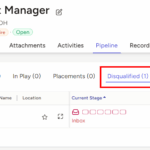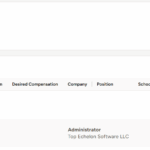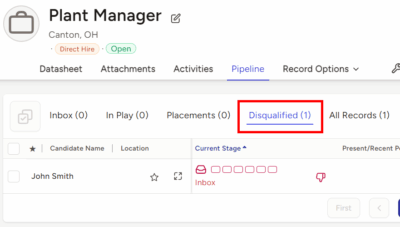Learning management software (LMS) is a digital tool designed to help organizations manage and deliver online learning programs. It is used by businesses, educational institutions, and training organizations to create, deliver, and track educational content and assess the progress and performance of learners.
The main function of an LMS is to provide a centralized platform where learners can access online courses and training materials. This includes course content such as videos, presentations, and interactive quizzes, as well as other resources such as textbooks, articles, and other learning materials. The LMS provides a user-friendly interface for learners to access these materials, allowing them to learn at their own pace and on their own schedule.
LMS software also offers a range of tools and features to support learners and trainers. For example, it can provide assessments to test learners’ knowledge and understanding of course content, as well as progress tracking and reporting features that allow trainers to monitor the performance of individual learners or groups. Some LMS software also includes social features such as discussion forums, chat rooms, and messaging tools, which enable learners to connect and collaborate with each other and with trainers.
Advantages of Learning Management Software
One of the main advantages of learning management software is its ability to deliver training and educational content to a large and geographically dispersed audience. This makes it an ideal tool for businesses and organizations that have employees or clients in multiple locations. It can also be used to provide remote training for employees who work from home or on the road.
Another advantage of LMS software is its ability to provide customized and personalized learning experiences. The software allows trainers to create courses and learning paths that are tailored to the needs and abilities of individual learners. This can help to improve the effectiveness of training programs by ensuring that learners are engaged and motivated to learn.
LMS software can be used for a wide range of educational and training programs, including employee onboarding and training, compliance training, skills development, and professional development. It is also used by educational institutions to deliver online courses and distance learning programs.
There are several types of learning management software available on the market, each with its own unique features and capabilities. Some LMS software is designed for specific industries, such as healthcare or finance, while others are more general-purpose and can be used across a wide range of industries. Some LMS software is cloud-based, which means it is hosted on remote servers and accessed over the internet, while others are installed locally on a company’s own servers.
Overall, learning management software is a powerful tool for managing and delivering online learning programs. It provides a centralized platform for learners to access educational content and resources, while also offering a range of tools and features to support trainers and track learner progress. By providing customized and personalized learning experiences, LMS software can help to improve the effectiveness of training programs and enhance the skills and knowledge of learners.
Learning Management Software Best Practices
While learning management software (LMS) is typically associated with employee training and development, it can also be a valuable tool for recruiting and hiring top talent. By incorporating an LMS into the hiring process, organizations can attract and assess candidates more effectively, and provide a better overall candidate experience. Here are some best practices for using LMS software to recruit and hire top talent:
Develop and deliver engaging training content: To attract top talent, it’s important to provide engaging and informative training content. This includes creating training modules that cover important topics like the company’s culture, values, and mission. By presenting this information in a compelling way, you can help candidates understand what makes your organization unique and what they can expect if they join the team.
Utilize interactive assessments: Interactive assessments can help to identify top candidates quickly and efficiently. By incorporating quizzes, tests, and simulations into the hiring process, you can evaluate candidates’ skills and knowledge, and gain insight into their ability to problem-solve and think critically. This can also help to create a more engaging and interactive hiring experience for candidates.
Provide personalized learning experiences: One of the key benefits of LMS software is its ability to provide personalized learning experiences. This can be particularly useful in the hiring process, where different candidates may have different levels of knowledge and experience. By tailoring training content to individual candidates, you can ensure that they are engaged and motivated to learn, and that they are gaining the skills and knowledge they need to succeed in the role.
Use data to inform hiring decisions: LMS software typically provides robust reporting and analytics capabilities, which can be used to track candidate progress and assess their performance. By analyzing this data, you can gain insight into each candidate’s strengths and weaknesses, and make more informed hiring decisions. This can also help to identify areas where candidates may need additional training or support.
Foster collaboration and communication: Effective collaboration and communication are essential components of any successful hiring process. By incorporating social features like discussion forums and messaging tools into the LMS, you can encourage candidates to engage with each other and with recruiters and hiring managers. This can help to create a sense of community and foster a more positive candidate experience.
Ensure accessibility: To attract top talent, it’s important to ensure that your training content is accessible to all candidates. This includes providing closed captioning and transcripts for video content, and ensuring that all materials can be accessed using assistive technologies like screen readers. By making your training content accessible to all candidates, you can create a more inclusive and equitable hiring process.
Monitor and optimize the hiring process: Finally, it’s important to continually monitor and optimize the hiring process to ensure that it is as effective and efficient as possible. This includes tracking key performance indicators like time-to-hire, cost-per-hire, and candidate satisfaction, and using this data to identify areas where the process can be improved. By constantly refining and improving the hiring process, you can attract and hire top talent more effectively, and gain a competitive advantage in the talent market.
Learning management software can be a powerful tool for recruiting and hiring top talent. By providing engaging and personalized training content, using interactive assessments, fostering collaboration and communication, and continuously monitoring and optimizing the hiring process, organizations can attract and hire the best candidates for the job. With the right LMS software and practices in place, organizations can gain a competitive advantage in the talent market and build a strong and successful workforce.








